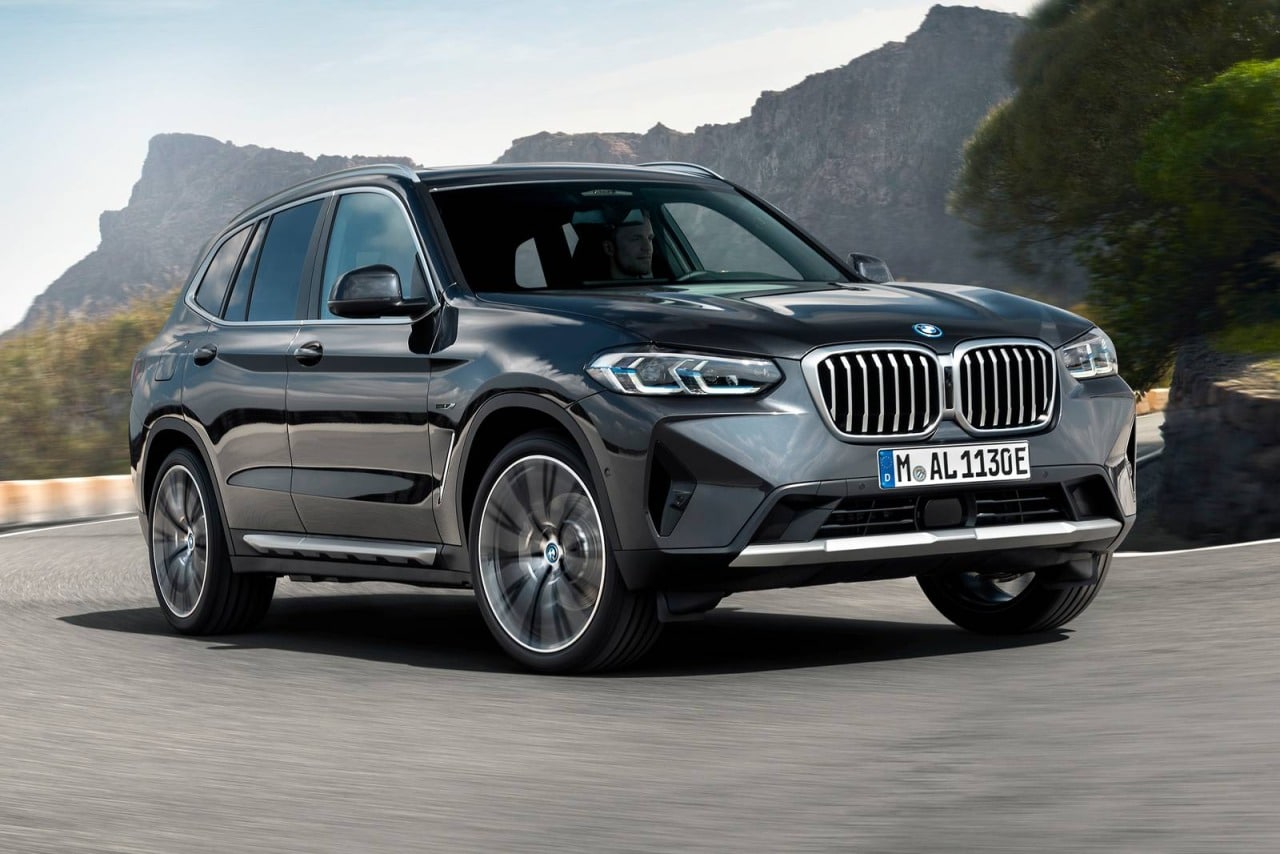- BMW isn't messing with the X3 recipe.
- One hybrid option is added while another is dropped.
- Overseas all-electric X3 would make a fitting replacement to canceled PHEV.
What's New for the 2022 BMW X3
BMW's best-seller gets a fresher look, throws a mild hybrid into the mix
The BMW X3 is the automaker's most popular vehicle, outselling the X5 and 3 Series by a healthy margin. With solid reviews and more than 75,000 units sold last year in the U.S., the X3 is a hit with the automotive press and buyers alike. For the 2022 model, BMW isn't resting on its laurels, but it's also loath to hamstring its golden goose. Changes for the most sought-after 2022 BMW X3 variants are light but meaningful, while BMW sees room for experimentation throughout the rest of the range.
2022 brings a handful of changes
Changes to the 2022 X3 start with the exterior. BMW has updated the X3's styling at the front and rear, with an angular headlight cluster and redesigned front bumpers. The classic "kidney" grille elements are now conjoined, mimicking the frame design seen in higher-end BMW SUVs.
Inside, the 2022 BMW X3 has a new standard 10.25-inch display, with the iDrive 7 system, and cloud-based navigation. The iDrive 7 system offers over-the-air software updates, so owners don't need to go into the dealer just to get the latest and greatest infotainment interface. However, the ongoing microchip shortage has led BMW to remove touchscreen functionality from many of its vehicles to keep production running. Unfortunately, the X3 suffers the same fate as its siblings and loses the touchscreen for 2022. The iDrive system can still be operated via a control pad/dial.
Electrification added and subtracted
Considering the steady march toward electrification in every corner of the automotive market, we were surprised to see BMW drop the xDrive30e plug-in hybrid (PHEV) version of the X3 from the lineup. BMW noted that over 30,000 units of the xDrive30e were manufactured in their Spartanburg, South Carolina, plant last year — more than 25% of the X3 models produced. That's a solid percentage for any vehicle and makes us wonder why BMW discontinued such a popular vehicle.
BMW taketh away, but it also added a 48-volt mild hybrid system to six-cylinder X3 M40i models. The system utilizes a starter-generator and an additional 48-volt battery, which means smoother starts from a stop and a more refined stop-start system. BMW also says that it helps acceleration and allows the X3 M40i to drive under electric power at low speeds.
When do we get the EV?
The million-dollar question is this: Though BMW dropped a plug-in hybrid model, when will it bring the tantalizing EV version of the X3 stateside? BMW introduced the all-electric iX3 overseas in 2019,and as its name suggests, it is essentially an X3 EV. With subtle styling changes from the standard X3, the iX3 is an electric vehicle that doesn't overtly advertise its alternative powertrain. It's an interesting approach and one that runs counter to conventional EVs, which tend to sport outlandish styling and lean into the inherent otherness of their electric running gear.
The BMW iX3 in the non-U.S. market is powered by an 80-kWh battery and is estimated by the automaker to hit somewhere in the neighborhood of 285 miles, according to the European WLTP standard. On paper, the iX3 seems like it'd be a solid entry into the segment, though it's not likely to make headlines for a modest effort that hedges its bets on the side of practicality. Our only question remains, "When do we get one?"
Edmunds says
BMW keeps the X3 appealing, but the automaker drops the PHEV and stays quiet about future electric X3 plans. For now.





 by
by